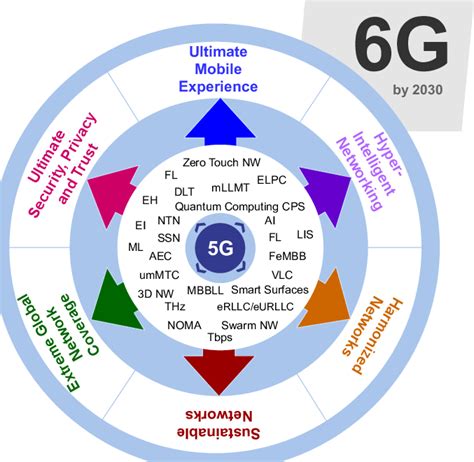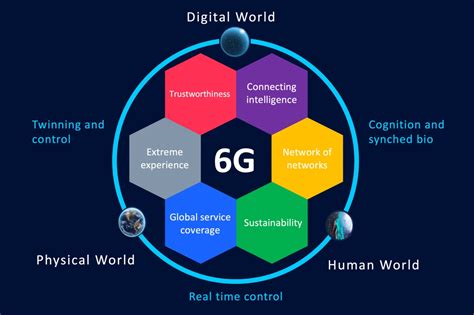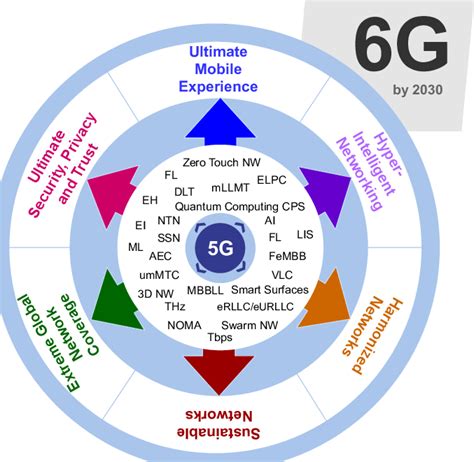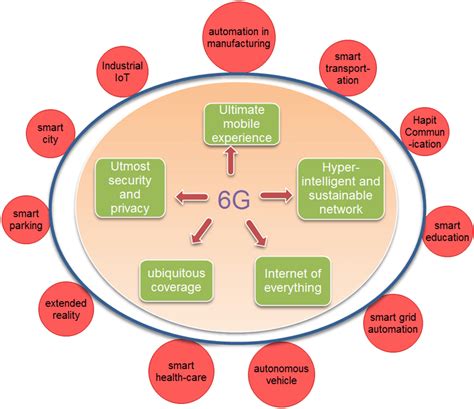Breaking News


Popular News


Explore the latest in 6G technology, global deployment strategies, implementation challenges, regulatory perspectives, and potential benefits in this informative blog post.The dawn of 6G technology is on the horizon, and with it comes the promise of unprecedented connectivity and innovation. As we look ahead to the deployment of 6G networks, it’s crucial to understand the technology, the global strategies being employed, the challenges that lie ahead, the regulatory landscape, and the potential benefits it holds for society. In this blog post, we will delve into the world of 6G, exploring what it is, how countries around the world are approaching its deployment, the obstacles they face, the regulatory perspectives shaping the landscape, and the potential advantages that 6G technology could bring. By examining these key aspects, we aim to provide a comprehensive overview of the current state of 6G deployment and the various considerations that come into play on a global scale. Join us as we navigate through the complexities of 6G technology and the strategies and challenges surrounding its implementation.
Contents

6G technology is the next generation of wireless technology that is currently in the research and development phase. It is expected to provide even faster internet speeds and more reliable connectivity than the current 5G technology. With 6G, it is anticipated that data transfer speeds could potentially reach up to 1 terabyte per second, enabling extremely high-speed communication and connectivity.
Furthermore, 6G is expected to support advanced technologies such as holographic communication, advanced virtual reality, and seamless integration with artificial intelligence. The increased speed and reliability of 6G technology will open up new opportunities for various industries including healthcare, education, autonomous vehicles, and smart cities.
However, the development and deployment of 6G technology also come with its own set of challenges. It will require significant investment in infrastructure, research, and development. Additionally, there are concerns about the potential health and environmental effects of increased exposure to higher frequency electromagnetic waves that come with 6G technology. Regulatory bodies and policymakers will need to address these concerns as part of the deployment strategy for 6G technology.

The deployment of 6G technology is shaping up to be a hot topic in the global tech industry. Countries and companies around the world are jockeying for position, seeking to be at the forefront of this next-generation network.
One strategy that is being employed by many countries is to invest heavily in research and development. This involves pouring significant resources into understanding the technical specifications of 6G and how it can be effectively deployed. Countries are also forming collaborations with leading tech companies and academic institutions to ensure that they have the necessary expertise to implement 6G networks.
Another strategy is to focus on building the necessary infrastructure. This involves investing in the construction of new telecommunications towers, increasing the capabilities of existing fiber optic networks, and enhancing the overall connectivity of the country. By doing so, countries aim to create an environment that is conducive to the successful implementation of 6G technology.

In the era of fast-paced technological advancements, the transition from 5G to 6G technology is inevitable. However, there are several challenges that need to be addressed for the successful implementation of 6G. One of the major challenges is the need for massive infrastructure upgrades. The implementation of 6G technology requires a complete overhaul of the existing infrastructure, including the installation of new towers, antennas, and network equipment.
Another challenge in the implementation of 6G technology is the lack of standardization. With multiple companies and countries working on developing 6G technology, there is a lack of consensus on the standards for 6G. This can lead to interoperability issues and hinder the seamless deployment of 6G technology on a global scale.
Moreover, the security and privacy concerns associated with 6G technology pose significant challenges. As 6G technology will enable the connection of billions of devices, ensuring the security and privacy of the data transmitted over 6G networks is crucial. This requires robust encryption and authentication mechanisms to protect against potential cyber threats.

In the current global landscape, the deployment of 6G technology is a topic of great interest and discussion. As the world eagerly awaits the arrival of the next generation of wireless connectivity, regulatory perspectives play a crucial role in shaping the future of 6G deployment. Regulatory bodies around the world are actively involved in the process of defining rules and standards for the implementation of 6G technology, ensuring that it meets the necessary requirements for a seamless and efficient deployment.
One of the key challenges in regulatory perspectives on 6G deployment is the need for international cooperation and harmonization. With the global nature of wireless technology, regulatory frameworks must be aligned across different countries and regions to facilitate a smooth and uniform deployment of 6G. This requires extensive collaboration and coordination between regulatory bodies, as well as a deep understanding of the technical and operational aspects of 6G technology.
Furthermore, regulatory perspectives on 6G deployment also involve addressing privacy and security concerns. As 6G promises to bring about revolutionary changes in the way we communicate and interact with technology, it is imperative for regulatory bodies to establish robust frameworks that safeguard user data and ensure the integrity of the communication networks. This necessitates the formulation of stringent regulations and standards that uphold the ethical and legal aspects of 6G deployment, ultimately ensuring a secure and trustworthy environment for its implementation.

The potential benefits of 6G technology are vast and promising. With its projected ultra-high speed and low latency, 6G has the potential to revolutionize various industries, including healthcare, manufacturing, and transportation. The ability to transfer data at unprecedented speeds will enable real-time remote surgeries, advanced robotic automation in factories, and safe autonomous vehicles.
Additionally, 6G technology is expected to greatly enhance the Internet of Things (IoT), allowing for seamless connectivity between billions of devices. This could lead to significant advancements in smart cities, agriculture, and environmental monitoring. Through improved connectivity and data exchange, 6G has the potential to drive innovation and efficiency across numerous sectors, ultimately improving the quality of life for individuals around the world.
In summary, the potential benefits of 6G technology extend far beyond simply faster download speeds. Its impact on various industries and everyday life could be transformative, ushering in a new era of connectivity and technological advancement.

What is 6G and how does it differ from 5G?
6G is the next generation of wireless technology, expected to be even faster and more reliable than 5G. It is anticipated to offer unprecedented data speeds, ultra-low latency, and seamless connectivity.
What are some global perspectives on the deployment of 6G?
Different countries have varying approaches to 6G deployment. Some countries are investing heavily in research and development to lead the way in 6G technology, while others are focused on collaboration and partnerships with industry leaders.
What are the major challenges in deploying 6G worldwide?
Challenges in deploying 6G include the need for massive infrastructure upgrades, spectrum allocation issues, standardization efforts, and concerns related to security and privacy.
How will 6G impact industries and everyday life?
6G has the potential to revolutionize industries such as healthcare, transportation, and entertainment by enabling advanced applications like remote surgery, autonomous vehicles, and immersive virtual reality experiences. It could also lead to a new era of smart cities and connected devices.
What are the anticipated timelines for the commercialization of 6G networks?
While there is no definite timeline for the commercial release of 6G networks, some experts predict that initial deployments could start as early as 2028, with widespread adoption expected by the mid-2030s.
What role will governments and regulatory bodies play in the development of 6G?
Governments and regulatory bodies will play a crucial role in shaping the development of 6G by providing funding for research, defining spectrum policies, and setting standards to ensure interoperability and security.
How can businesses and organizations prepare for the transition to 6G?
Businesses and organizations can prepare for the transition to 6G by staying informed about the latest technological advancements, investing in R&D, and exploring potential use cases for 6G in their respective industries.